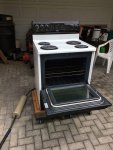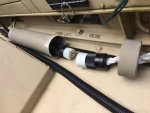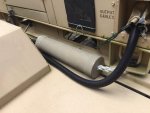devilphrog
Member
- 93
- 4
- 6
- Location
- Melbourne, FL
Finally got to load testing the generator on my house. It ran a 4 ton AC, 2.5 ton AC, pool pump and everything else at right around 90%. I attempted to add my water heaters to it as an experiment and it pulled the machine to a halt. No overload light or anything. Looks like the water heaters and range are the only items that require manual load management.
She smokes a bit (light bluish), I'm wondering if there is a bit of wet stacking that needs to be burnt out as the is a bit of slobber leaking out of the muffler to manifold connection. I'll keep an eye on it next outage, but the load on the house is such that it should keep the guts clean in normal operation.
Thanks to everybody on this forum for the help along the way!
She smokes a bit (light bluish), I'm wondering if there is a bit of wet stacking that needs to be burnt out as the is a bit of slobber leaking out of the muffler to manifold connection. I'll keep an eye on it next outage, but the load on the house is such that it should keep the guts clean in normal operation.
Thanks to everybody on this forum for the help along the way!






